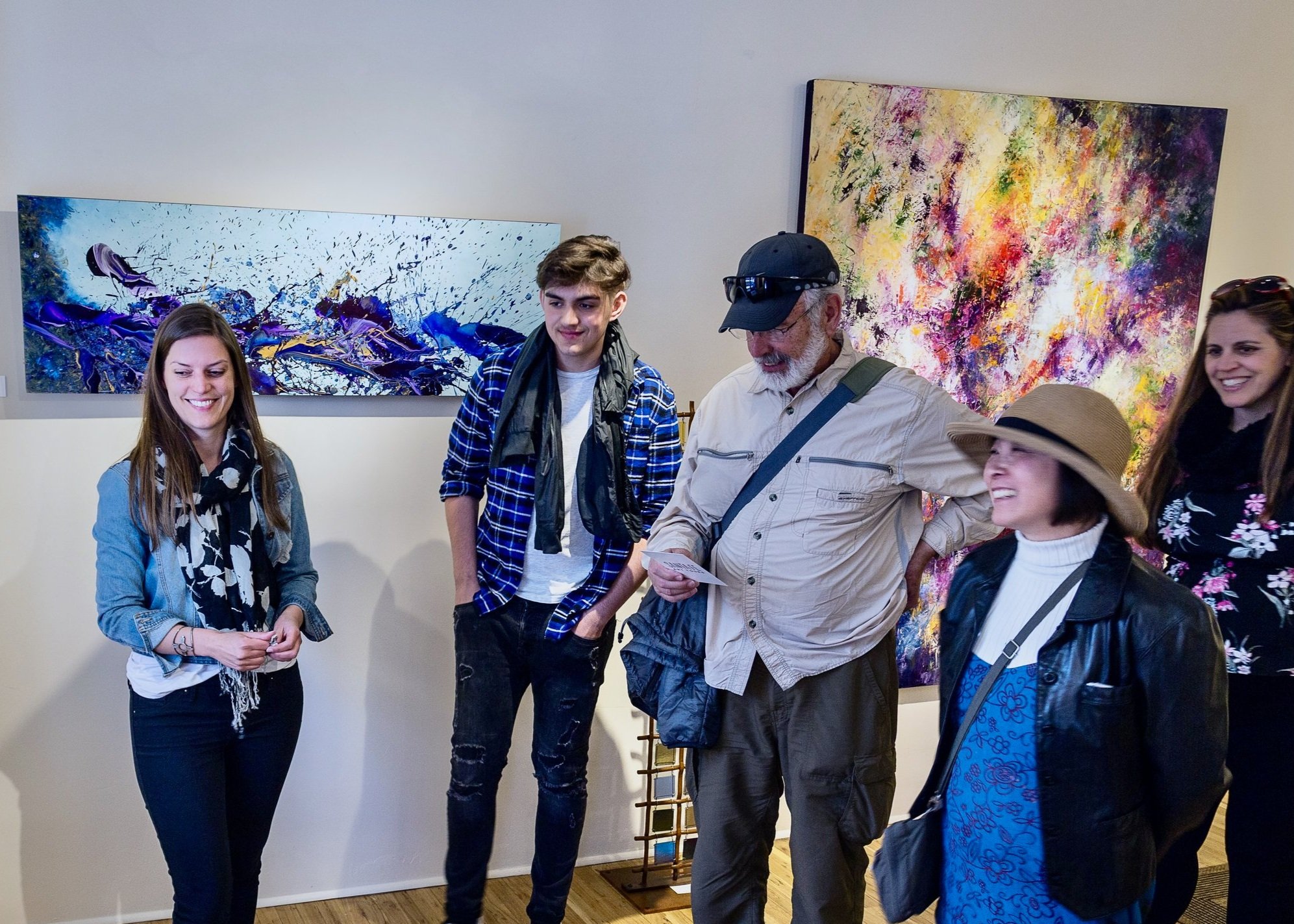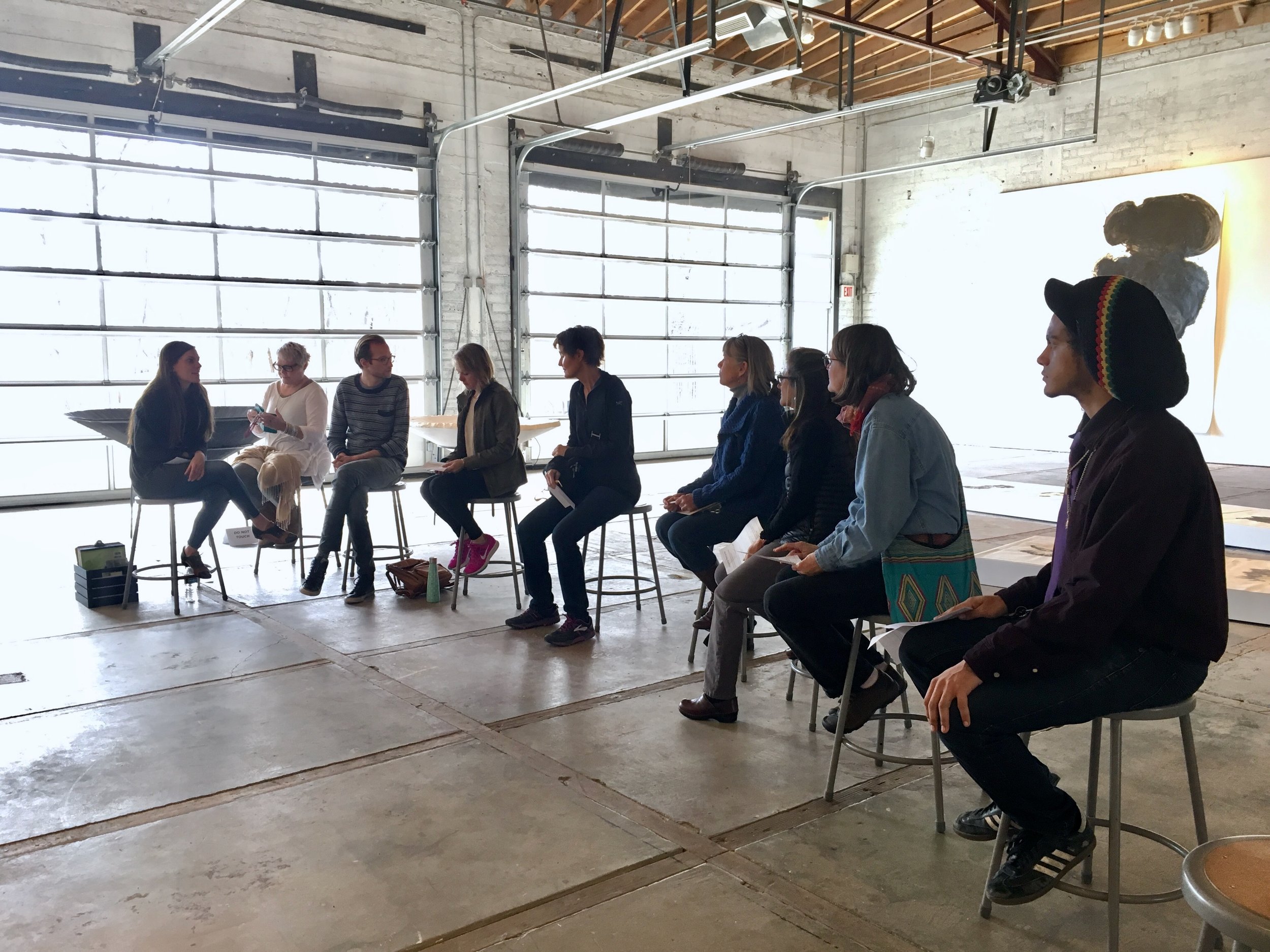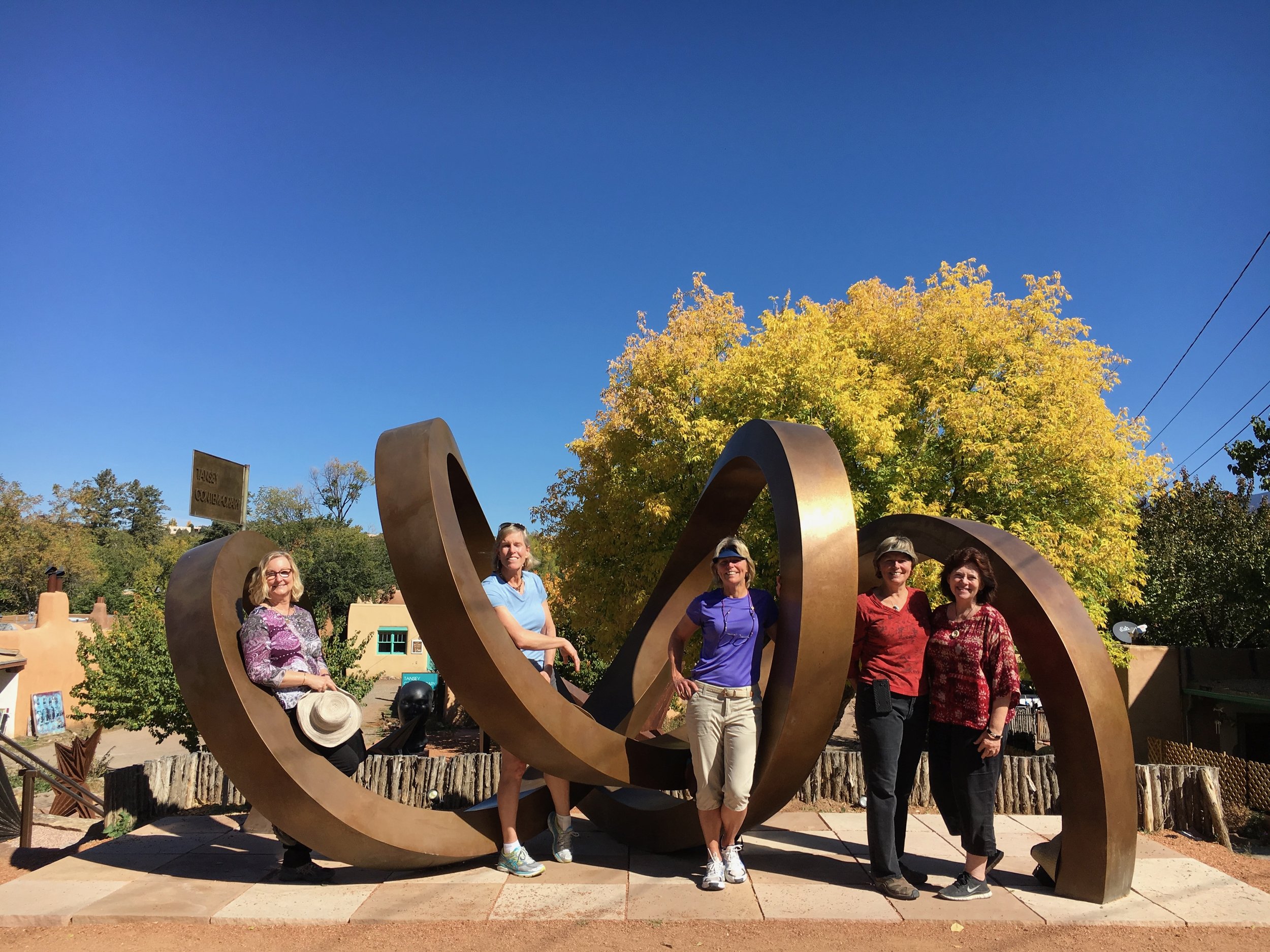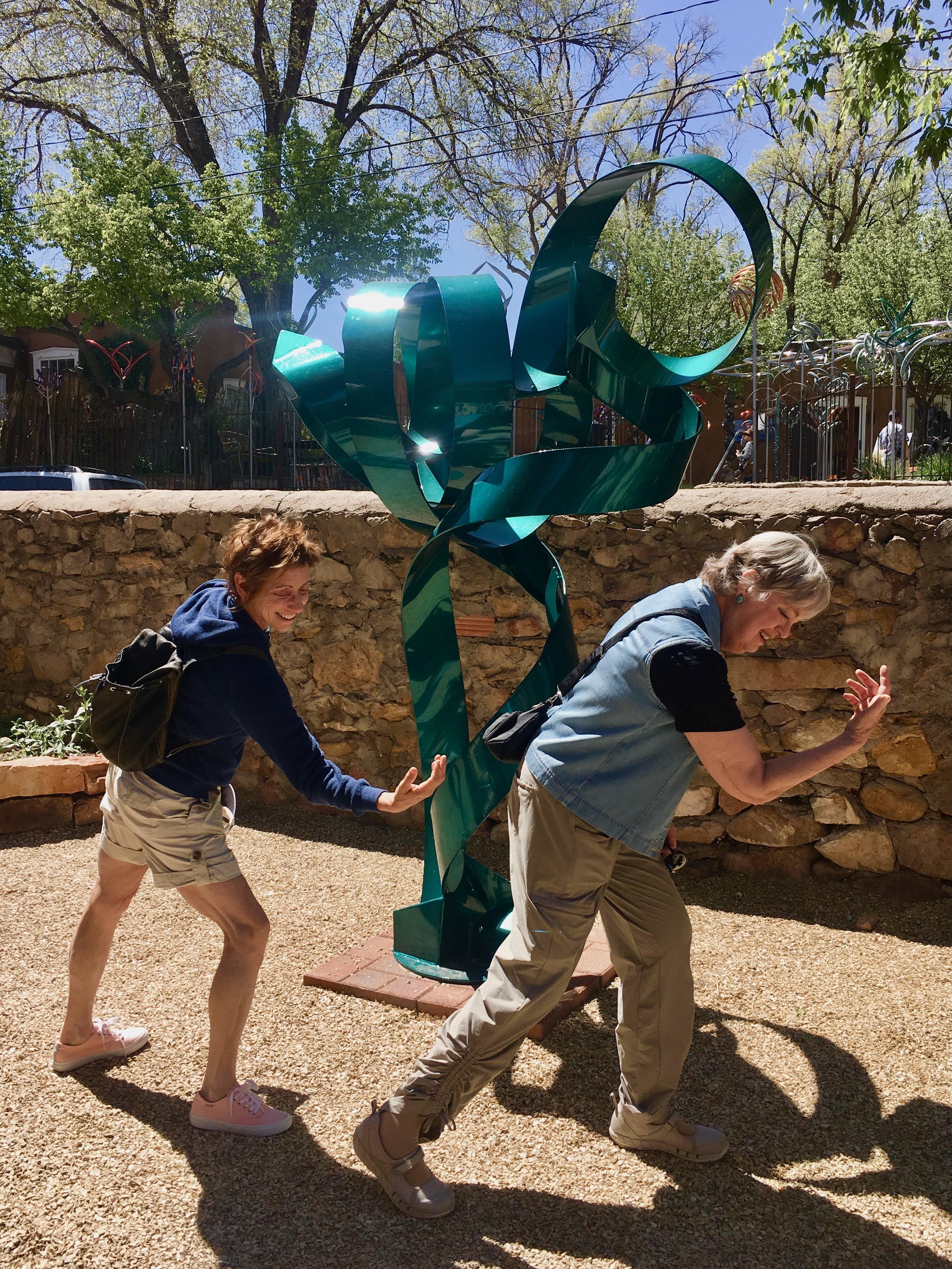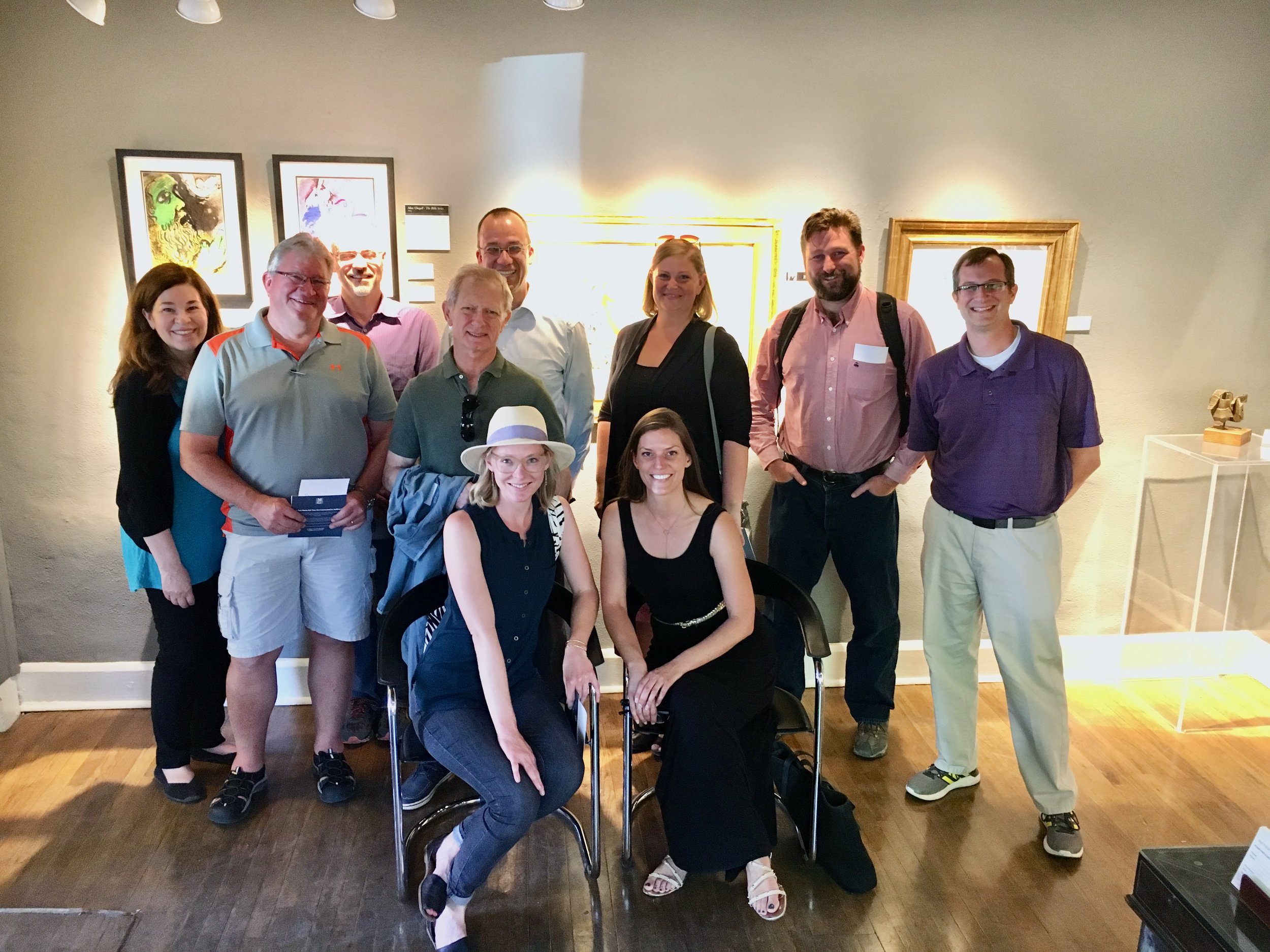Why looking at art is an awesome team building activity
As a museum educator, I’ve long observed people build connections and community by discussing art together. It’s one the reasons I love doing what I do! But to many, the benefits of spending time with art are less obvious. I get it: art can be oblique, inaccessible, and even intimidating. And if you’ve never learned how to actively look at art, it might even seem boring. Believe it or not, enjoying art can actually be a lot more dynamic and memorable than you might think – and it's a fun way to learn, share, and encourage critical thinking.
Here are five reasons looking at art is a great team-building activity.
1. It gets the conversation flowing
Put a group of people in front of a compelling work of art – ideally with an encouraging guide – and it won’t be long before they start to get chatty.
Most of us like to look at things. We like to be visually stimulated. And we enjoy talking about our personal connections with the world around us.
I love teaching with art because something really cool happens when people discuss an object that they’re looking at together. First, abstract concepts become more accessible when they’re connected to something concrete and visible. And second, the shared process of making sense of something – or “meaning making” – is powerful and creates bonds between people.
2. It helps us to learn about each other
Art is open to interpretation – so talking about it is a great way to learn about your friends and colleagues.
Every person who looks at a work of art brings their own experiences, personal histories, and prior knowledge to it. Naturally, this influences their understanding of a work of art. By sharing these interpretations, we discover new perspectives and hidden meanings.
What you say about a work of art, or what you see in it, says so much about you. It’s a great way to learn more about others and how they understand the world.
3. It helps us to develop important skills
A work of art often communicates a narrative, message, or feeling that is encoded in its visual details, from shapes and figures to textures and colors. The process of deciphering information in the form of an image is described as “visual literacy.”
By identifying and interpreting visual clues, you draw upon prior knowledge, personal experience, and critical thinking skills such as observation, analysis, and interpretation. These skills are transferable to other professional fields, and practicing them can improve performance.
In fact, studies have shown that medical students who participated in an art education program showed improved clinical observation skills.
"The skills I learned studying fine arts in college are invaluable to me now as a physician,” said Jaclyn Gurwin, MD, the lead author of the most recent of these studies.
“I saw the impact art education had on my approach to medicine, and I wanted to recreate that experience for others in the field," said Gurwin. "The results of this study are incredibly encouraging, showing that art observation training can improve medical and ophthalmological observational skills. We hope that the improved observational abilities from this training will translate to improved clinical effectiveness, empathy and, ultimately, will make better physicians."
4. It makes people happy
I love the feeling of enjoying something visually compelling, and I always thought that this was just part of being an art nerd. It turns out, though, that there's something else going on.
Neurobiologist Semir Zeki found that looking at art triggers the production of the feel-good chemical dopamine in the orbital-frontal cortex of the brain. That’s the same part of the brain that lights up when you fall in love.
"There have been very significant new advances in our understanding of what happens in our brains when we look at works of art," said Zeki. "We have recently found that when we look at things we consider to be beautiful, there is increased activity in the pleasure reward centers of the brain. Essentially, the feel-good centers are stimulated, similar to the states of love and desire.”
How cool is that? If spending a few moments looking at a work of art can boost your mood, imagine what can happen when you really delve into a work of art with friends and colleagues.
5. It’s not your typical team building activity
Over 30 percent of employees dislike team building activities. Why? Some activities may be alienating, while others feel more competitive than collaborative. To boot, the takeaway of team building activity may not obvious, so it feels like a waste of time.
But visiting a unique museum or gallery and looking at art in a new way? It’s intellectually stimulating, it encourages skill building, and it promotes teamwork without forcing ropes courses (not all of us are athletically gifted) or trust falls. Pretty much everyone can enjoy a work of art – even those who are visually impaired. (We can incorporate sculpture that can be touched on our tours, for example.)
Having a deeper experience with a work of art is unexpected – many people don’t think they’ll get much from it, and they’re pleasantly surprised when they do. They also feel elated to have gained new perspective and deeper insight into art, themselves, and their colleagues.
It’s that shared sense of discovering something new together that really makes something unforgettable.
Ready to experience it yourself?
The art experience I’ve described above doesn’t just magically happen. The quality of the conversation often depends on a skilled facilitator who is comfortable encouraging ideas and nurturing the group dynamic.
Thanks to years of experience in museum education, we’ve developed methods and activities that help people feel more comfortable engaging with art. Once people get going, they love it!
If you’re coming to Santa Fe for a retreat, conference, or workshop, we’d love to schedule a team-building tour for your group.

